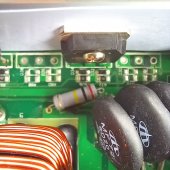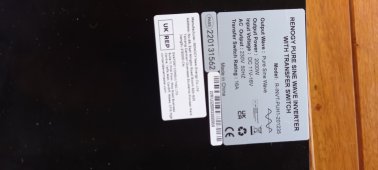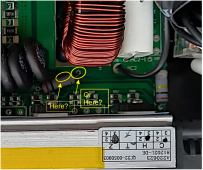I've got a problem with my relatively new inverter. (Renogy 2000w 240v 12v)
I purchased it in UK and moved to Peru
Was pleased to get it set up and working, powering small appliances.
Then one morning I turned it on, and heard a crackling noise. I honestly thought an insect had got inside and was fried! It stopped after a few seconds and operated normally.
Then next day it did the same thing but continued to crackle, so turned off.
I wanted to see if there was an insect inside so took it apart. Nothing, clean and dry inside.
So I carefully started it up with cover plate off, and to my surprise saw arking coming from the toroidal transformer and an adjacent resistor.
I tried to isolate with plastic, which worked for a day, but now happens all the time.
If I was in the UK, I would have just returned under warranty. But being in a remote part of Peru, where the nearest city is 3 hours away, I was hoping to fix it.
Any thoughts on what has gone wrong? Do toroidal transformers fail that easily? Or was it the resistor? I can't see any burning on it.
The design doesn't look too good, as the toroidal transformer is really close to the resistor and other components.
I raised the issue with Renogy, but not heard back.
I purchased it in UK and moved to Peru
Was pleased to get it set up and working, powering small appliances.
Then one morning I turned it on, and heard a crackling noise. I honestly thought an insect had got inside and was fried! It stopped after a few seconds and operated normally.
Then next day it did the same thing but continued to crackle, so turned off.
I wanted to see if there was an insect inside so took it apart. Nothing, clean and dry inside.
So I carefully started it up with cover plate off, and to my surprise saw arking coming from the toroidal transformer and an adjacent resistor.
I tried to isolate with plastic, which worked for a day, but now happens all the time.
If I was in the UK, I would have just returned under warranty. But being in a remote part of Peru, where the nearest city is 3 hours away, I was hoping to fix it.
Any thoughts on what has gone wrong? Do toroidal transformers fail that easily? Or was it the resistor? I can't see any burning on it.
The design doesn't look too good, as the toroidal transformer is really close to the resistor and other components.
I raised the issue with Renogy, but not heard back.








